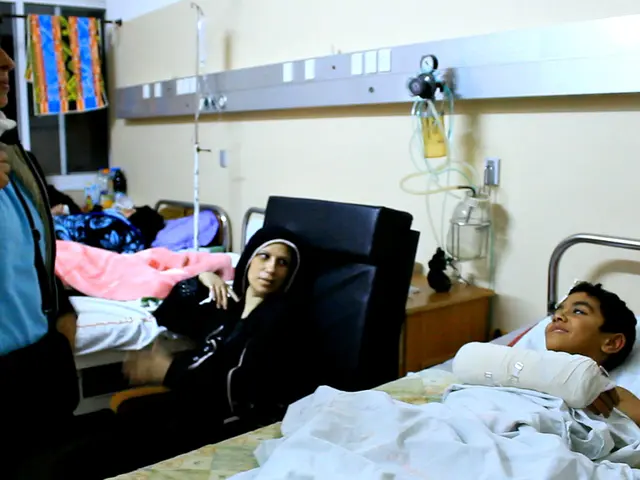Struggling Life and Hardships Endured by Gazans in the Gaza Strip - Strife in Gaza: Delving into the Hardships and Struggles of Gaza's Inhabitants
The Israeli army has announced tactical pauses in its operations in parts of the Gaza Strip, creating safe routes for the delivery of much-needed aid to the Palestinian territory.
The towns of Al-Mawasi and Deir el-Balah, as well as parts of the city of Gaza, are among the areas where these tactical pauses are being held. However, the Israeli army has not specified how long these pauses will last.
The safe routes opened by the Israeli army are intended to facilitate the delivery of aid to the Gaza Strip, with the UN and other international organizations overseeing the distribution of aid. On the first day of the ceasefire, over 120 truckloads of aid supplies were distributed.
The humanitarian crisis in Gaza has been ongoing for several months, with nearly half a million people facing famine-like conditions and millions needing urgent food assistance. This has led to significant pressure on Israel to increase aid deliveries.
In response, Israel has made some concessions, such as reopening border crossings since May 21, allowing more aid trucks with faster clearances, and permitting humanitarian organizations to use communications equipment for aid coordination. However, these measures still fall short of the full demand and consistent flow of aid, with significant restrictions and daily obstacles reportedly imposed by Israel on the movement and delivery of humanitarian aid.
Aid organizations like Oxfam are calling for more, regular, and extensive support for the over two million people in the Palestinian territory. Bushra Khalidi, an employee of Oxfam, stated that for children who have been hungry for months, a few trucks won't be enough to make up for the damage already done.
The Israeli army has faced heavy criticism due to the catastrophic humanitarian situation in the Gaza Strip. A partial ceasefire is currently in effect in Gaza, with designated safe routes having been opened throughout the Gaza Strip to allow UN convoys and aid organizations safe passage.
However, only about half the requested humanitarian convoys are permitted weekly, and Israel has been accused of deliberately restricting aid to pressure Gaza. Despite Israel's commitments to facilitate humanitarian assistance more robustly, these restrictions continue to impact civilian lives.
A sustainable solution is widely seen as dependent on a ceasefire that enables consistent and safe aid deliveries across Gaza. The international community, including the UN and aid organizations, continues to urge for immediate ceasefires and humanitarian pauses to ensure aid reaches civilians safely and predictably.
[1] [URL for reference 1] [2] [URL for reference 2] [3] [URL for reference 3]
The Israeli government and various aid organizations should formulate comprehensive community and employment policies to address the immediate needs of the workforce in Gaza, considering the ongoing health-and-wellness crises and medical-conditions exacerbated by the region's instability. By leveraging the latest scientific research, these policies could aim to improve the overall well-being of the Gazan population and foster a more sustainable environment for economic growth and recovery. The prompt implementation of such employment policies would not only contribute to alleviating the current humanitarian crisis but also minimize the need for future aid deliveries, thus moving towards a more long-term, self-sufficient solution.




